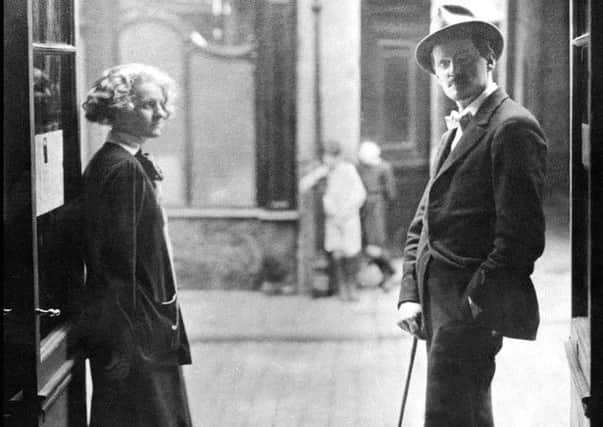The battle to publish James Joyce’s Ulysses


THE MOST DANGEROUS BOOK: THE BATTLE FOR ULYSSES
BY Kevin Birmingham
Head of Zeus, 432pp, £20
KEVIN Birmingham’s new book about the long censorship fight over James Joyce’s Ulysses braids eight or nine good stories into one mighty strand.
It’s about women’s rights and heroic female editors, the First World War, anarchism and modernism, tenderness and syphilis, moral panic and about the Lost Generation and the tent it pitched at Sylvia Beach’s Paris bookstore. It isolates a great love story, that of Joyce and Nora Barnacle, one that comes with a finger-burning side order of some of the most cheerfully filthy correspondence in literary history.
Advertisement
Hide AdThe best story that emerges from Birmingham’s book, however, may be that of the arrival of a significant young non-fiction writer. Birmingham marches through this material with authority and grace, an instinct for detail and smacking quotation and a fair amount of wit. It’s a measured yet bravura performance.
He nails a bedrock truth about Ulysses, to wit: “For all its obscurities, Joyce’s book is more sentimental than erudite, more elemental than cerebral.” Those erotic letters between Joyce and Barnacle? Birmingham correctly singles them out as “one of the secret headwaters of modern literature” before noting about Joyce: “He wanted people to read novels as carefully, as ardently and as sleeplessly as they would read dirty letters sent from abroad. It was one of modernism’s great insights. Joyce treated readers as if they were lovers.”
When Joyce embarked upon Ulysses in 1915, he was in his early thirties, impoverished, unemployed, married with two children and living in Trieste. His literary career was a shambles. His novel, A Portrait of the Artist as a Young Man, was unpublished. Dubliners, his story collection, had the bad luck to be issued a few days before the assassination of Archduke Franz Ferdinand. It sold only a few hundred copies.
Things were about to get worse. He had devastating eye problems brought on, Birmingham argues convincingly, by syphilis. He endured more than a dozen surgical procedures, several of which are recounted in excruciating detail. As excerpts from Ulysses started appearing in the Chicago magazine The Little Review, edited by Margaret Anderson, it began to be harassed by censors, partly because of its supposed links to radicals and anarchists.
Birmingham is excellent on how, while anti-vice crusaders wanted to ban Ulysses to protect what they considered to be tender female sensibilities, many of the book’s most important champions were women. These included Anderson and her partner at The Little Review, Jane Heap. Upon reading Joyce’s prose, Anderson said to Heap: “This is the most beautiful thing we’ll ever have. We’ll print it if it’s the last effort of our lives.” Both women would end up in court.
Sylvia Beach, the owner of the Shakespeare & Co bookstore in Paris, published the first edition of Joyce’s novel in 1922. One of her greatest gifts to Joyce was allowing him to make costly revision upon revision at the last minute, though the book had already been typeset, frustrating her printer but securing the novel’s brilliance.
Advertisement
Hide AdThe book’s other heroes include Ezra Pound, Ernest Hemingway (who helped Beach smuggle copies of Ulysses into the United States), and John Quinn and Morris Ernst, who both defended Joyce’s writing in court.
This book is populated by the less heroic as well. Virginia Woolf didn’t like Ulysses at first and passed up a chance to be its first publisher. A colourful literary pirate named Samuel Roth peddled his own editions of the book.
Advertisement
Hide AdBirmingham performs a service in so thoroughly reanimating this material. He understands how Joyce’s novel was “a new rendering of the way people think.” He adds: “Thoughts don’t flow like the luxuriant sentences of Henry James. Consciousness is not a stream. It is a brief assembly of fragments on the margins of the deep, a rusty boot briefly washed ashore before the tide reclaims it.”
Along the way, he explains not just why Joyce matters, but also why good history matters. “Nearly a century later, the reactions to Ulysses can feel overblown – like hype from like-minded friends and bombast from journalists trying to sell papers,” he writes.
“These days, Ulysses may seem more eccentric than epoch-changing, and it can be difficult to see how Joyce’s novel (how any novel, perhaps) could have been revolutionary. This is because all revolutions look tame from the other side. They change our perspectives so thoroughly that their innovations become platitudes.”
He adds: “We forget what the old world was like, forget even that things could have been any other way.”